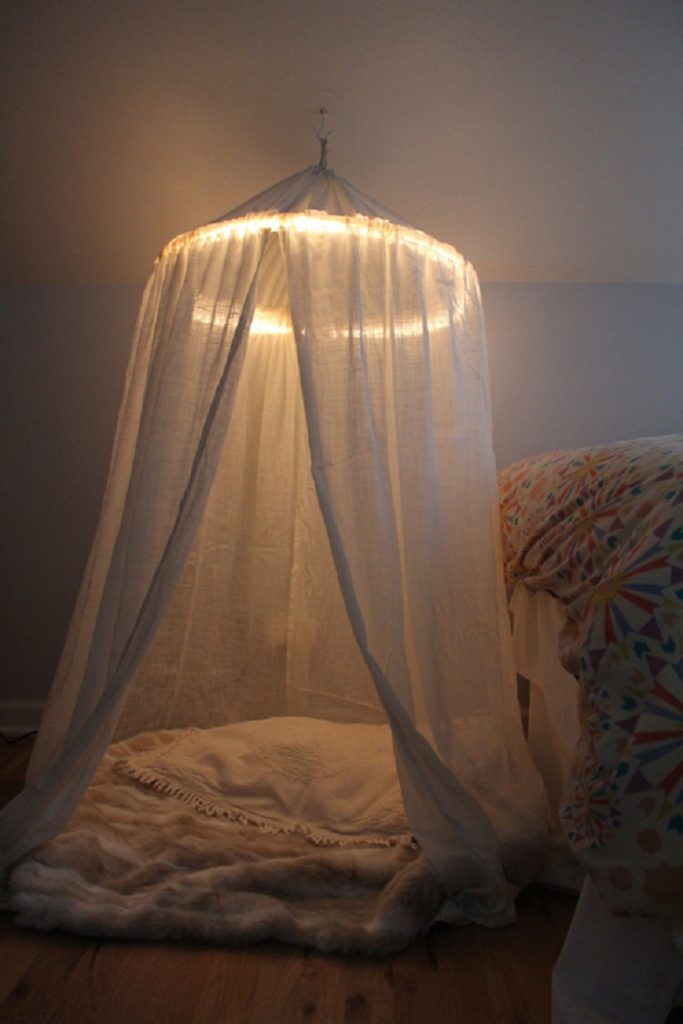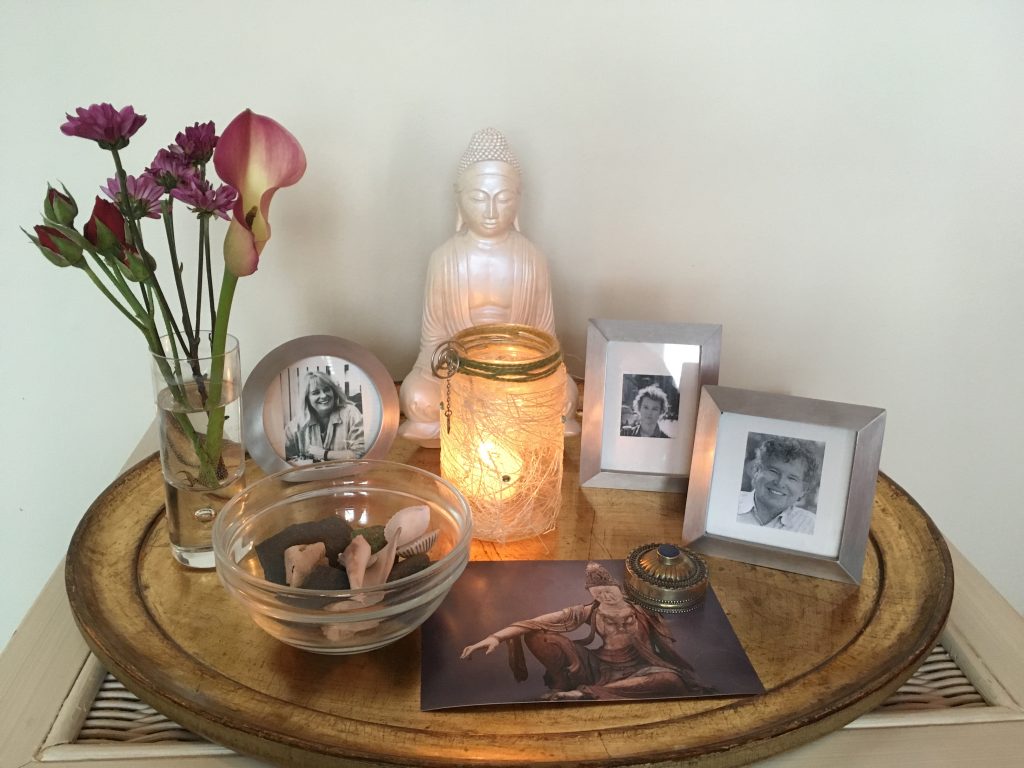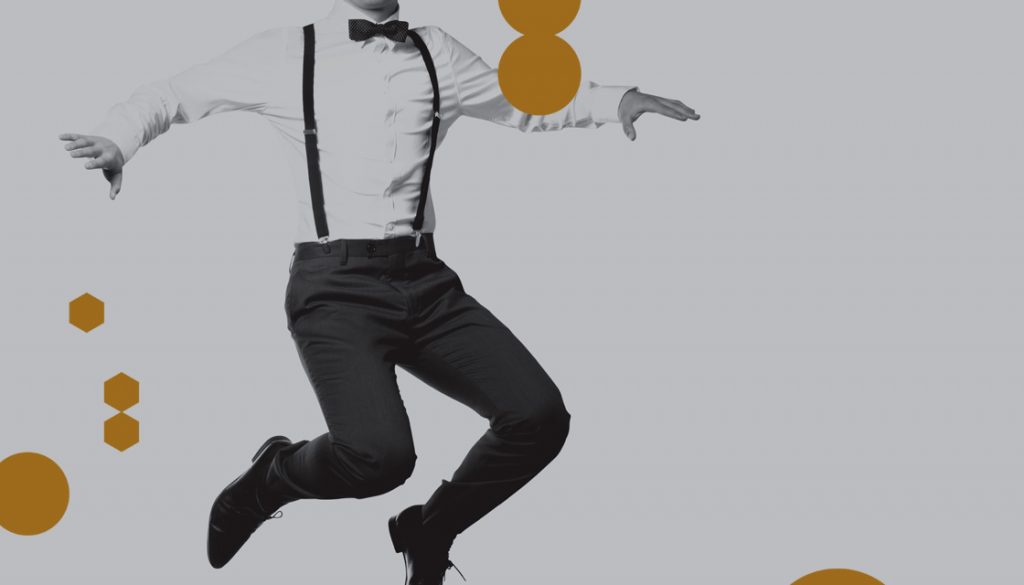Safe, Secluded, Sheltered
 I’ve been listening again to some of the talks from the retreat. One of my favorites was this one, by Gil Fronsdal, in which he describes the healing quality of the sate of samadhi as similar to the way he felt when he was a kid and used to put a white bed sheet over the dining room table, then crawl inside where he felt: safe, secluded, sheltered from the hectic activity that was going on around him, peaceful, quiet, and bathed in beautiful, soft light.
I’ve been listening again to some of the talks from the retreat. One of my favorites was this one, by Gil Fronsdal, in which he describes the healing quality of the sate of samadhi as similar to the way he felt when he was a kid and used to put a white bed sheet over the dining room table, then crawl inside where he felt: safe, secluded, sheltered from the hectic activity that was going on around him, peaceful, quiet, and bathed in beautiful, soft light.
It’s mesmerizing. Listen to it here.
One Millimeter
There is something that Ajahn Sucitto said in one of his talks — the one called Waves and Fields: No Self — that keeps coming back to me, calling to me, whispering to me….like a little bell ringing…or maybe it’s more like a flash of light I can just barely glimpse out of the corner of my eye. It wasn’t that he said it like it was anything big. It was just sort of an aside, towards the end of the talk, in the midst of a larger point he was making about the self and practice in relationship. But it grabbed me. And it hasn’t let go.
He said:
It doesn’t matter who you are — who you sense yourself as being. Who you sense yourself as being is like — one movement — away from freedom. The ice is one millimeter thick. You could skate across that forever. Or, you could just pause…and drop through.
***
I heard that and something inside me stopped, sat up and took notice. Listen for yourself. Click here. (It’s at about the 40 minute mark of the talk.)
I Bring to Mind and Invoke
Another one of Ajahn Sucitto’s talks that’s having a big impact on me is the one from the last night of the retreat, titled: Establishing the Temple, in which he talks about the importance of making a space that can help create a “field of practice.” By which he means establishing a “theme” in the mind — a certain boundary of attention (non-harming, for example) — so that whatever arises in awareness, one can bring it into this field.
He talks about the use of ritual to “potentize” this field of practice, to solemnize it, to give a little more weight to it…to embed it more fully by expressing it as an outward form. One of these rituals is the practice of paying homage to the Buddha, the Dhamma, and the Sangha:
“I bring to mind and invoke the Buddha, the awakened one, the one truly awakened by himself…through the courage to go out on his own, through the resilience and the resolve to keep practicing — no matter what — and through his penetration to the truth. I wish to bring Buddha to mind in this respect. I wish to bring, invoke the Buddha as the one who, moved by compassion, spent his entire waking life teaching, instructing, encouraging others for their welfare. I wish to bring to mind and invoke the Buddha as someone who had the gifts to be able to express this subtle and profound teaching in worlds that we can still make use of. And so bringing the Buddha to mind, I also acknowledge my ability to bear such a thing in mind, and to receive blessings of the Buddha.
“I wish to bring to mind and invoke the Dhamma, the truth of the way things really are, revealed by a Buddha — taught in words, modeled in deeds, exemplified, penetrated by view. Dhamma that is immediate, accessible, inviting me inwards and encouraging me to reveal through my own efforts, through my own wisdom. I wish to bring to mind and invoke the Dhamma, which produces harmony, welfare, and liberation. I wish to bring to mind and invoke the Dhamma, which is persisting to this day and taught to this day, and which I aspire to realize for myself.
“I wish to bring to mind and invoke the Sangha, those who have practiced well, those who have practiced directly, those who have practiced with insight, those who have practiced with integrity through thousands of years — many different personalities, many different characteristics — who have struggled and worked and followed the pathway of the Buddha. And who are still present in this day and age. I wish to bring to mind and invoke any members of that extended community of practitioners who I know, who I read about, who act as models for my behavior. I wish to bring to mind and invoke Sangha so that I may also see myself as part of that community of followers.
(He says this so beautifully, it feels like a blessing.)
He also talks about the practice of making an offering to this field. “By my act of offering, I’m entering into, contributing, participating in this field that we can all bear in mind.” He talks about the symbolism of these ritual offerings and the qualities they represent: Flowers for integrity/virtue/sila; Candles for discernment/clarity/seeing; Water for kindness/compassion; and Incense for samadhi.
***
His words are lovely. But what touches me the most is the unmistakeable depth of feeling they express. Reading doesn’t do it justice. Listen to him here.
How to Have Harmonious Relationships
I’ve been listening again to another of Ajahn Sucitto’s profound-and-useful talks, this one given near the end of the November retreat, in which he describes how to bring what we’ve learned during retreat practice directly into our lives outside of retreat — especially in how we engage in relationships both at home and at work.
He says: One of the first principles is that instead of “I want it this way,” or “I want it that way,” or “It shouldn’t be like this..” — just unhook, step back, and ask “How is this?”
Look for what activations are occurring. Do I feel fed up, dismissed, irritated, happy, worried, concerned….? Hmmmm…. Then ask: How do I find harmony with that? Where does harmony occur with that?
Widen the field. Feel it in the body. Hmmm….”It’s like this now. Feels like this now.”
This is not stepping out of the field. It’s staying within it, but just disengaging one’s wishes and preferences. “It’s like this now. I’d like it to be like that, but it’s like this.” Hmmm. “How is that?” Can one sustain that, and see what that brings up. What shifts that allows. When we come to that place of disengage — not dissociate — but just lift, then, can we ask: “What’s helpful here? What’s helpful here that allows harmony?”
Maybe taking one’s time. Maybe being more patient. Maybe just — a little more generosity of heart. Maybe just a little more groundedness in the body. Maybe just a little more openness, of acceptance of differences.
***
This is just the beginning. He also talks about having very clear boundaries, not taking on other people’s issues, etc. I’ve listened to this talk over and over. And it’s been helpful to me — over and over. He talks about “fields” and “potencies” and “differentiation,” but that’s just language. This is not a theoretical talk. It is very, VERY practical.
Simplify. Get More Comfortable.
I’ve been listening to the talks (there are 43 of them!) from Ajhan Sucitto’s recent month-long retreat at the Forest Refuge. They’re terrific. Some of them I’ve listened to more than once, including this one: Samadhi — Absorbing the Sweet Spot.
“Happiness and ease are the forerunners of samadhi,” he says. Many people find it really difficult to access these qualities because as Westerners, we tend to get intellectual/conceptual/”notional” about the process of mindfulness and mediation.
So he likes to give a very different kind of instruction.
He says: Let the body teach you about mindfulness. Let walking teach you about mindfulness. Let eating teach you about mindfulness. Let sitting teach you about mindfulness… The body is where there is direct wisdom that knows: this is stress. [sigh] And there’s the release from that. This is what we want to know. Thinking mind can’t know that because it can always conceive of a stress, of a should, or a could, or of whether I match up to the standard. It will always be doing that… It can not realize the end of stress. And realization is what it’s about.
He suggests instructions that are non-technical: “Put aside what you don’t need. What you feel you need, stay with that for awhile and then after that, see what else you can put aside…..
Simplify is one instruction.
The other instruction is: Get more comfortable.
Put aside the topics that are going to make you more uncomfortable… Attune to qualities that are going to give you a sense of comfort and contentment. Self respect. Bearing in mind one’s skillful action, one’s skillful companions, one’s warm relationships, one’s love…. Just bear it in mind. Drink it in. Drink in the beauty of it…
***
Try it.
(And definitely listen to the talk. Click here.)
This is Good; This is Bad
As part of the homework for the “Waking Up White” work I’ve been doing, I listened (again) to a terrific talk by Thanissara, which — in addition to an impassioned call to Reclaim the Sacred lost through colonialism, racism, domination of nature and repression of the feminine — includes an interesting anecdote about the first time she heard Ajahn Chah give a dharma talk.
Thanissara says that she was on her first retreat ever, where the practice was a very strict style of Burmese meditation, taught by a Burmese master (who didn’t speak any English). She was having quite a hard time of it, so about half-way through, she decided to sneak out of the retreat center to go listen to a talk being given at Oxford by a Thai master who she’d heard was very powerful, very free and very direct — Ajahn Chah. (He didn’t speak any English either, but at least there was a translator!)
Thanissara says that this was the first time she had actually heard the Dharma and as Ajahn Chah was talking, she was thinking: This is really, really good.
Then at the end of the talk, he said: If you’ve been sitting here thinking “This is good” or “This is bad,” you have really been listening.
(So then, of course, Thanissara thought: Wow, that’s really good!)
OK, I won’t say the talk is good. Or bad. I’ll just say: Listen to it! (here)
Not Comfy for Long
 My natural inclination, especially when confronted with the state of the world right now, is to find some nice, comfy corner of my mind and sleep in.
My natural inclination, especially when confronted with the state of the world right now, is to find some nice, comfy corner of my mind and sleep in.
But that’s just an old habit.
Besides, I know from experience that nice comfy corners tend not to stay nice and comfy for long.
I’d rather wake up.
If you would too, I highly recommend listening to this talk: Engaged Dharma in a World on Fire. It was given by Kitissaro and Thanissara back in March of 2015, but it’s still relevant — maybe even more so now than back then!
What Is Needed Now?
I’ve been listening (again and again) to Ajahn Sucitto’s beautiful meditation instructions (13 minutes), in which he suggests “dropping in the question: What is needed now?”
This is addressed “to the citta, to the heart, to the sense of presence, to the ‘I’ behind the ‘I am’, to awareness.” Because awareness does not have a specific object (unlike attention), asking the question is almost like dropping a penny down a well. (As in: “Hmmm. Who knows where that’s going to go?”)
The question could be: What’s needed? What’s not needed? What’s helpful? What’s not helpful? What’s beautiful? What would bring in the beautiful?
This goes past the level of thought. Let the penny drop down, beyond the immediate wish to come up with an answer, dropping it into the body.
What do you really, really need? As if this were the last moment of your life. What’s really needed now? Not operating according to scripts. Not for an answer such as “What is needed is more mindfulness, more clarity, more….” No. Not that. Not: “What is needed is for other people to…” No. Not other people. Not: “What is needed is if I were….” No. Not “I.” Beneath that. Behind that. What’s needed right down in your belly? In your heart? In your tissues? That’s the place where you let it drop.
It’s not necessary to have to come up with a verbal response. Maybe just asking the question is all that is needed.
And then to listen.
***
Click here.
Build Your Nest
 As many of you know, one of our sangha members (Thomas) is currently sitting a month-long retreat taught by Ajahn Sucitto at the Forest Refuge (in Barre, MA). I’ve been listening to the talks from that retreat, which is a great practice in itself.
As many of you know, one of our sangha members (Thomas) is currently sitting a month-long retreat taught by Ajahn Sucitto at the Forest Refuge (in Barre, MA). I’ve been listening to the talks from that retreat, which is a great practice in itself.
At the end of one my favorites of these talks, Sucitto says this about instructions to ‘place your attention’ in meditation:
“Generally we associate doing things with ‘doing it to get it done’ and ‘doing it to get good results’ and ‘doing it because you are to be measured and assessed in terms of how well you did it.’…
“Those attitudes are disastrous. [laughs] Truly disastrous. And if you keep putting that into your body, repeatedly [heavy sigh], it’s going to be pretty painful. It’s not a cooperative mode, if that’s what’s understood by the instruction to ‘place attention’.
“Attention is a natural faculty of mind. It’s one of the inevitable faculties. However erratic it may be, we always have attention. What we need to do is to get that little bird of attention to rest on something suitable. If you create the right nest and put the right food in it, that little bird’s gonna sit there, ‘cuz it likes it. [delighted laughter]
“So you just…Build your nest. Put the food in the nest with devotion. And then…may it be!”
***
Click here to listen to the talk. It’s a keeper.
It Takes Courage
“We’ve been training for a period like this for a long time,” Jack Kornfield says, in the talk he gave at Spirit Rock the week after the election.
It’s a terrific talk. And it’s not just Jack… Thanissara is there with a plea to join the Native American protests against the pipeline in North Dakota, and it ends by playing a little Leonard Cohen. (“Even though it all went wrong, I’ll stand before the Lord of Song, with nothing on my lips but Hallelujah!“)
As a reminder of our training, and as a way to move forward, Jack offers this from the teachings of the Buddha:
“Others will be cruel; we will not be cruel. Thus we will incline our hearts.
“Others will kill or harm living beings; we will not harm beings. Thus we will incline our hearts.
“Others will be greedy; we will not be greedy. Thus we will incline our hearts.
“Others will speak falsely, maliciously; we will speak truthfully and kindly. Thus we will incline our hearts.
“Others will be envious; we will not be envious. Thus we will incline our hearts.
“Others will be arrogant; we will not be arrogant. Thus we will incline our hearts.
“Others will be unmindful; we shall establish mindful presence. Thus we will incline our hearts.
“Others will lack wisdom; we shall cultivate wisdom. Thus we will incline our hearts.”
***
Jack talk ends the talk with this quote by Thomas Jefferson: “One person with courage is a majority.”
Click here to listen.







